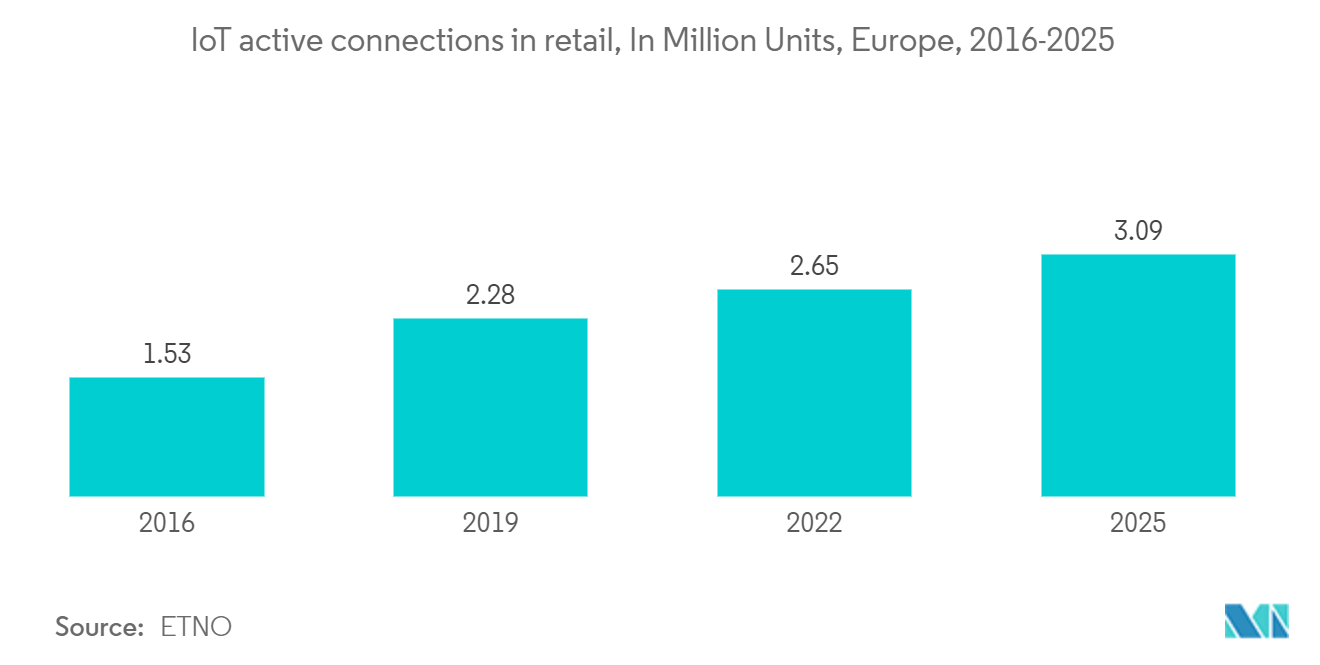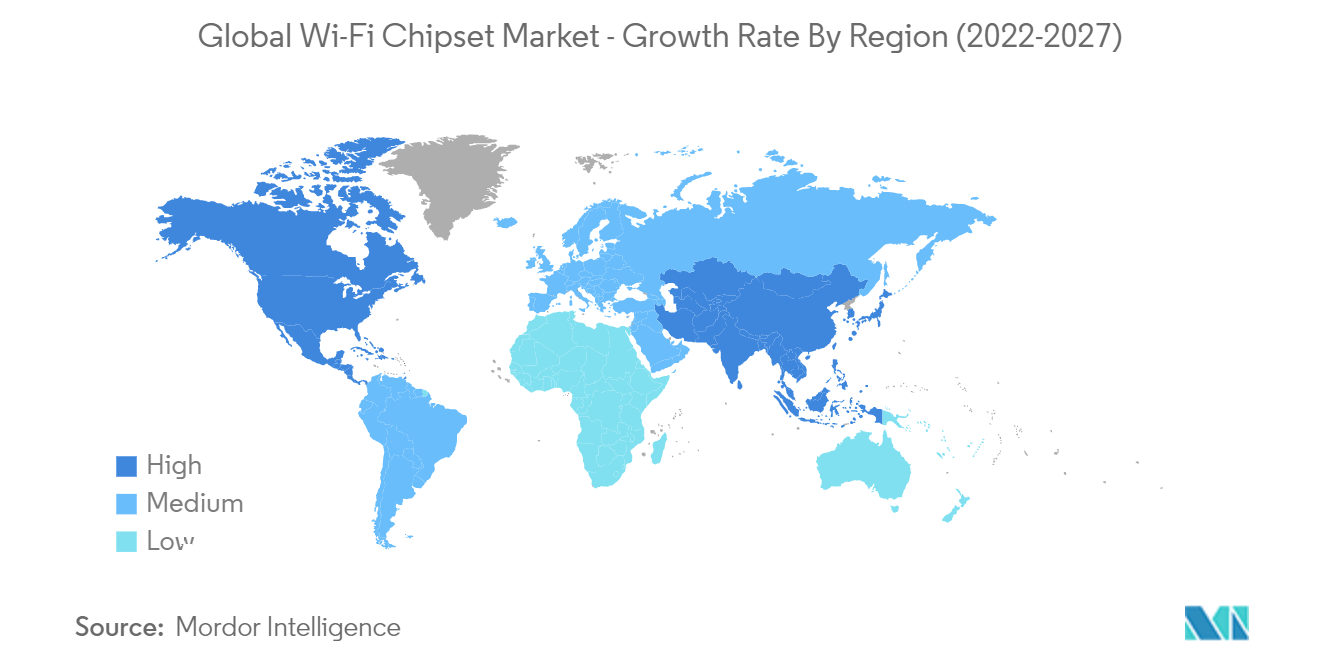Market Trends of Global Wi-Fi Chipset Industry
This section covers the major market trends shaping the Wi-Fi Chipset Market according to our research experts:
Enterprise to Observe a Significant growth Over the time
- The companies are expanding their internet portfolio, which will significantly drive the market. In April 2022, Tata Communications, a digital transformation and telecommunications services company, announced that it is expanding internet services to the enterprise sector globally, including in India, and that these services, combined with a software-defined Wide Area Network (SD-WAN), will enable businesses to make faster business-centric decisions.
- In Jan 2022, The WiFi Alliance released WiFi 6 Release 2, an update to WiFi 6 that affects all WiFi 6-enabled bands. The new standard improves device and application performance and power management. "Enterprise, industrial, and Internet of Things (IoT) applications" will benefit from the increased power capability.
- Players in the region are highly concentrated on providing optimum services for IoT customers. For instance, AT&T and Cisco recently extended their collaboration to manage Internet of Things (IoT) devices for enterprises. Both the companies are managing millions of connected devices across manufacturing, transportation, utilities, public sector, retail, and healthcare industries along with public safety on FirstNet, built with AT&T.Because of the spread of its family standards, and WiFi has the advantage of being able to address a wide range of profiles. This means it will be used in most IoT scenarios, either alone or conjunction with more specific protocols like cellular.
- Furthermore, the IoT market in Latin America is expected to reach 1.2 billion connections by 2025, driven by growth in the enterprise segment, primarily for smart manufacturing and smart building solutions. Operators will be deploying IoT solutions in the auto, telematics, and bioenergy industries, and cities such as Buenos Aires, Santiago, Medellin, and Sao Paulo are implementing smart city initiatives.
- Massive Machine-type Communications (MMTC) are more likely to play a crucial role in healthcare. With its help, hospitals could create massive sensor networks that can monitor patients, their habits, behaviors, and activities using corresponding sensors in wearables, smartphones, and multiple connected devices.

North America Holds the Major Share of the Market
- According to International Telecommunication Union, In 2022, over 89% of people in the United States will have access to the internet, up from nearly 75% in 2012. In 2018, the United States had more than 312 million internet users, making it one of the largest online markets in the world.
- The increase in the adoption of 5g will drive the Wi-Fi chipset market in the region. For example, 5G will account for more than half of total mobile connections in North America, according to the latest Mobile Economy North America 2020' report from GSMA Intelligence. Of the region's forecasted 426 million mobile connections, 51% will run on 5G networks by 2025. The report also suggests that the region will pass 340 million mobile subscribers by 2025.
- In August 2021, SecurePass, a turn-key secure multi-device management solution for seamless guest access at a range of facility types, was launched by GoZone Wi-Fi, based in the United States. Outdoor recreational places, such as campgrounds, RV parks, marinas, state or national parks, MDUs, smart buildings, conference facilities, and campus communities, are immediate prime verticals and use cases for this solution. Developments like this will create an opportunity for the market players to grow.
- According to StatCan, Canada's ICT sector contributed CAD 102.3 billion to the country's gross domestic product in the first quarter of 2021. According to Government of Canada data, the Information and Communication Technology sector increased by 5.0% in 2020. ICT's Business Research and Development (R&D) spending was 42.1% of the total economy's R&D which grew by 6.8% in 2020.
- Due to the high increase of the Wi-Fi chipsets in the region, the companies plan to develop new products to meet the market's demand. For Instance, in March 2022, Broadcom, an industry provider of Wi-Fi chips for client devices and network infrastructure, revealed that it had shipped one billion Wi-Fi 6/6E chips. This also implies that Broadcom has supplied 500 million Wi-Fi 6/6E chips in just one year. The corporation is also implying that Wi-Fi 7 will be available in the near future.


